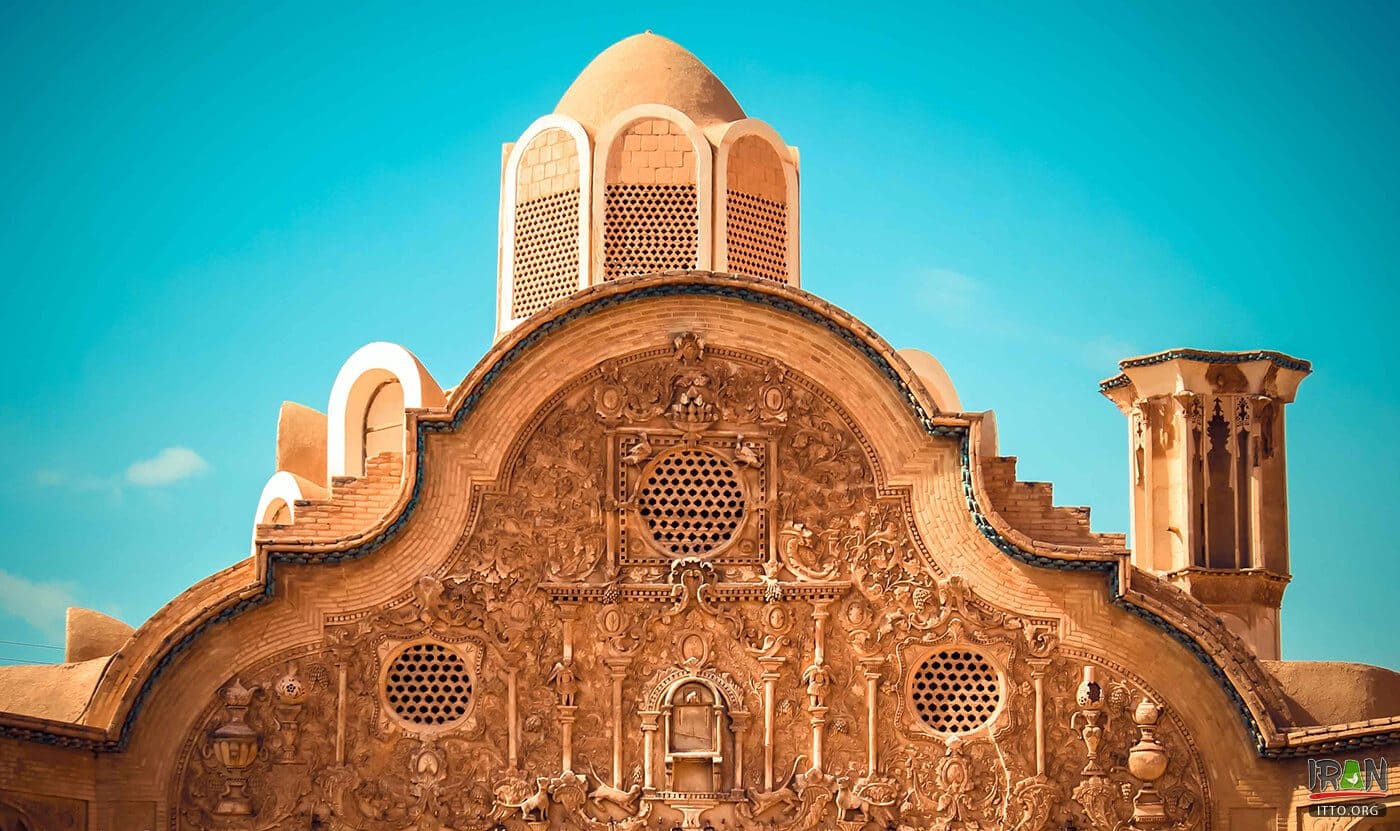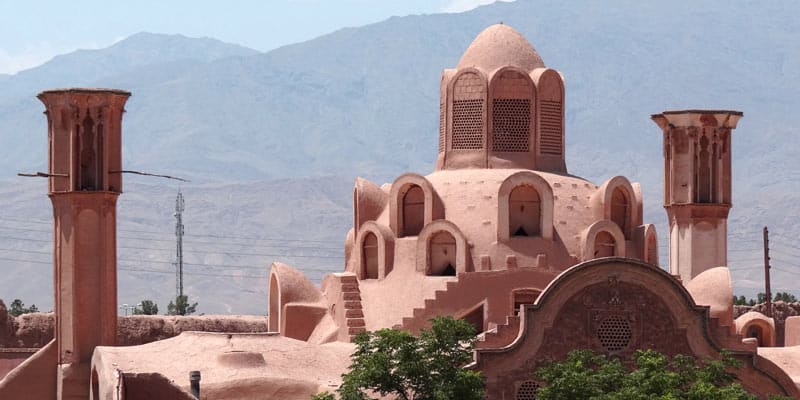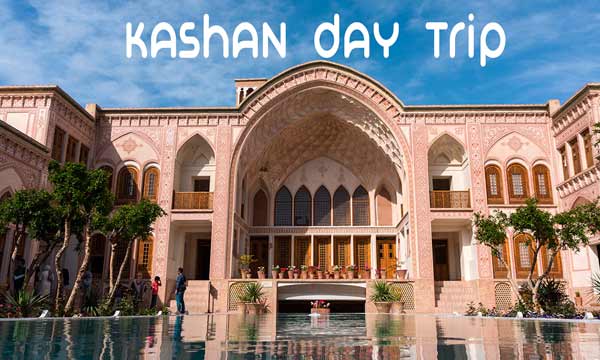Kashan is a city in central Iran, located in the province of Isfahan. It is known for its rich history, stunning architecture, and beautiful gardens. Kashan has a long history, dating back to the Achaemenid Empire, and has been a center of trade and commerce for many centuries. The city is famous for its traditional Persian houses, including the 19th-century Ameri House, which is considered one of the finest examples of traditional Persian architecture. Other notable buildings in Kashan include the Tabatabaei House, the Fin Garden, and the Boroujerdi House. In addition to its architecture, Kashan is also known for its production of traditional Persian carpets and textiles, and for its mineral springs, which have been used for their therapeutic properties for thousands of years. Today, Kashan is a thriving city and a popular tourist destination, offering a unique blend of traditional culture and modern amenities.
Kashan tourist’s attractions and highlights in a glance
Fin Garden (Bagh- E-Fin) a UNESCO World Heritage Site and one of the oldest gardens in Iran)
Bazaar of Kashan
Sultan Mir Ahmad Bath (Hammam- E- Sultan Mir Ahmad)(a traditional Persian bathhouse with beautiful tilework and stained glass windows)
Tabatabei house (Khan-E- Tabatabaei)(a 19th-century traditional Persian mansion with intricate tilework and plaster decorations)
Boroujerdi House (Khan-E- Boroujerdi)(traditional Persian mansion with beautiful courtyards and intricate tilework)
Nushabad underground city
Abbassian House (Khan-E- Abbassian)
Sialk historical mound (Tepeh Sialk) (an archaeological site with the remains of an ancient civilization)
Aghabozorg Mosque (a historic mosque with a traditional Persian design)
Maranjab desert
Fin Garden
Fin Garden, also known as Bagh-e Fin, is a historical Persian garden located in Kashan, Iran. It is considered one of the oldest gardens in Iran and is a UNESCO World Heritage Site. The garden dates back to the 16th century and was built for the governor of Kashan.
The garden features a variety of trees and plants, including cypress trees and roses, as well as several historic structures, including a traditional Persian bathhouse, a palace, and a small mosque. The bathhouse, called Hammam-e Sultan Mir Ahmad, is one of the highlights of the garden and is famous for its intricate tilework and stained glass windows.
Visitors to Fin Garden can also admire the traditional Persian architecture, including the use of water, which is an important element in Persian gardens, as well as the beautiful tilework and plaster decorations on the buildings. The garden is a peaceful oasis in the heart of the city and a popular tourist destination for those interested in Persian history and architecture.
Agha Bozorg Mosque
Agha Bozorg Mosque is a historic mosque located in Kashan, Iran. It was built in the late 18th century and is known for its traditional Persian architecture. The mosque was designed by a famous architect named Ustad Haj Ali Maryam and was built for a local religious leader named Agha Bozorg.
Agha Bozorg Mosque features a large courtyard surrounded by arches and columns, as well as several buildings, including a prayer hall and a school. The prayer hall is particularly notable for its beautiful tilework and intricate plaster decorations, which are typical of traditional Persian architecture.
Agha Bozorg Mosque is an important religious and cultural site in Kashan, and it attracts many visitors who are interested in the history and architecture of Iran. It is considered one of the finest examples of traditional Persian mosque architecture and is an important part of the city’s cultural heritage.
Tabatabaei House
Tabatabaei House is a traditional Persian mansion located in Kashan, Iran. It was built in the late 19th century and is known for its beautiful tilework, intricate plaster decorations, and traditional Persian architecture. The house was built for a wealthy merchant and has been well-preserved over the years, making it a popular tourist destination in the city.
Tabatabaei House features a large central courtyard surrounded by arches and columns, as well as several rooms and buildings, including a bathhouse, a winter and a summer living quarters, and a reception room. The house is also known for its beautiful tilework, including intricate geometric patterns, calligraphic inscriptions, and images of plants and animals.
Visitors to Tabatabaei House can admire the traditional Persian architecture, including the use of light and water, and the beautiful tilework and plaster decorations. The house is an important part of Iran’s cultural heritage and provides a glimpse into the traditional way of life of the country’s wealthy merchants and aristocracy.

Boroujerdi House
Boroujerdi House is a traditional Persian mansion located in Kashan, Iran. It was built in the mid-19th century and is known for its beautiful tilework, intricate plaster decorations, and traditional Persian architecture. The house was built for a wealthy merchant and has been well-preserved over the years, making it a popular tourist destination in the city.
Boroujerdi House features several beautiful courtyards surrounded by arches and columns, as well as several rooms and buildings, including a bathhouse, a reception room, and a main living area. The house is also known for its beautiful tilework, including intricate geometric patterns, calligraphic inscriptions, and images of plants and animals.
Hammam-e Sultan Mir Ahmad
Hammam-e Sultan Mir Ahmad, also known as the Sultan Mir Ahmad Bathhouse, is a historic bathhouse located in Fin Garden in Kashan, Iran. It is considered one of the finest examples of traditional Persian bathhouse architecture and is famous for its intricate tilework and stained glass windows.
The bathhouse was built in the late 19th century and features several rooms, including a changing room, a warm room, a hot room, and a steam room. The rooms are decorated with beautiful tilework, including intricate geometric patterns, calligraphic inscriptions, and images of plants and animals. The stained glass windows are also a notable feature of the bathhouse, and they provide natural light to the rooms while also creating a peaceful and relaxing atmosphere.
The bathhouse is an important part of Iran’s cultural heritage. Visitors to the Sultan Mir Ahmad Bathhouse can experience a traditional Persian bath, known as a hammam, which involves a series of relaxing and cleansing rituals.
Sialk Hill
Sialk Hill is an archaeological site located in Kashan, Iran. It is believed to be the remains of one of the world’s earliest human civilizations, dating back to the 5th millennium BCE. The site was first excavated in the 1930s and has since revealed a number of important artifacts and structures, including mud brick homes, storage buildings, and temples.
The most notable feature of Sialk Hill is its ziggurat, a massive stepped pyramid-like structure that was once used as a temple. The ziggurat is made of mud bricks and is one of the earliest examples of such a structure in the world. The site also includes several other smaller structures, as well as a large number of artifacts, including pottery, metal tools, and jewelry.
Sialk Hill is an important historical site and is considered one of the most significant archaeological discoveries in Iran. It attracts many visitors who are interested in the history of human civilization and the early development of human society.



